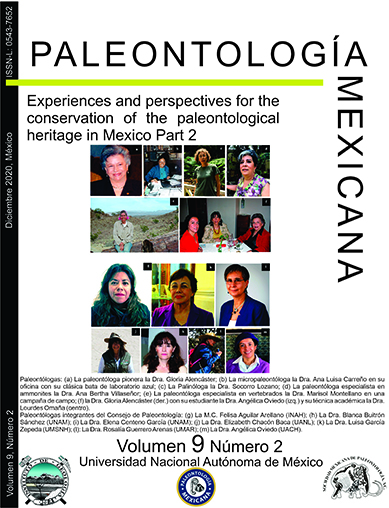Mexico has a great wealth of paleobiodiversity. For this reason, in recent decades, a series of legal norms have been established for its research, conservation and dissemination. These are approved by the Paleontology Council of INAH, which is the federal government body entrusted with this task, in coordination with researchers established in universities and research centers in the country. The activities of the Paleontology Council were resumed in 2017. One of its agreements was to promote the publication of research results, the exchange of experiences and proposals to strengthen the debate to improve the protection of paleontological heritage in the country. This is the second compilation related to this discussion.
DOI: https://doi.org/10.22201/igl.05437652e.2020.9.2
Published: 2020-12-15
